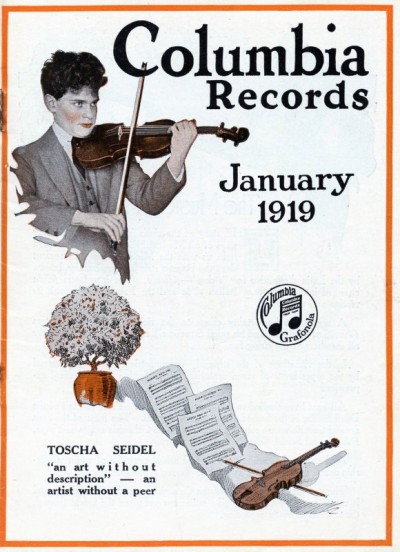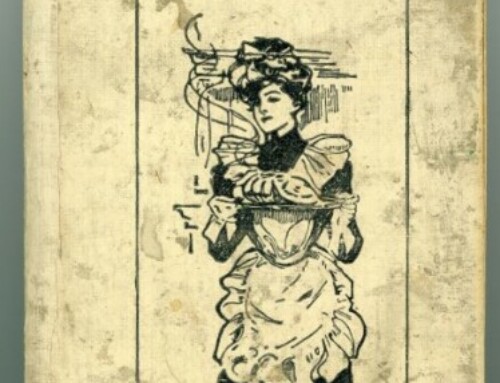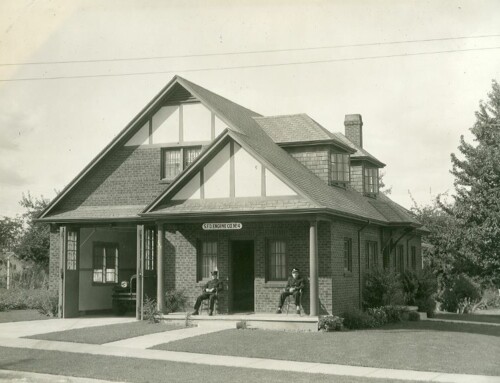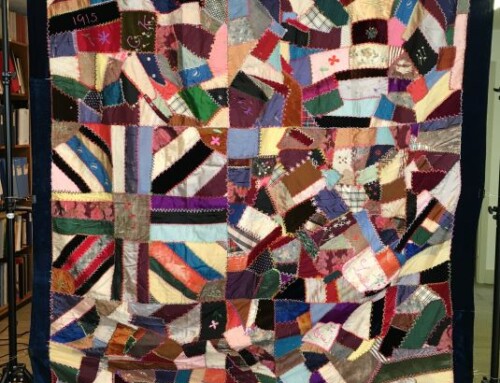How do you find music to listen to? I was recently reflecting on the way music access has changed in my own life in the last few years. Now, at a touch of a button, I can play any song I want, pretty much anywhere. This hasn’t always been the case, as a little pamphlet that made its way around Salem in January of 1919 made very clear.

Columbia Records Magazine, January 1919. WHC Collections 0063.001.0068.007.01.03
The pamphlet[1] was mass produced by the Columbia Graphophone Manufacturing Company. Part magazine, part catalog, it contains articles discussing music history, biographies of artists, and a long list of records available for order. Part Rolling Stone magazine, part iTunes Store, in paper form. 10 and 12-inch records could be purchased—the larger diameter providing the capacity for a longer playing time. However, the user would still likely need to get up every three to four minutes to change tunes on the average home phonograph.[2] Prices ranged from .85 cents to $1.25. The catalogue contains a rich mixture of musical styles from classical piano to Broadway and Vaudeville hits to ragtime dance numbers.
Popular Artist Names Unfamiliar
The names of the popular artists may be unfamiliar to our ears, but their treatment in the press rivals today’s gossip columns. Hulda Lashanska, the “great American Prima Donna” soprano is featured with a “candid” photo of her knitting at home. Amidst the discussion of the “sacred heights” of her vocal talent, are descriptions of her “great loves…her daughter, her home and her country.” Like many recording artists of today, she had an exclusive contract with the Columbia Graphaphone Company.[3] It is just a little jarring to consider her hit song was Antonin Dvorák’s “Songs My Mother Taught Me,” a Romantic piece written nearly 40 years earlier.
Two pioneering African American artists are also featured. A photograph of Wilbur C. Sweatman and his Original Jazz Band illustrates the Dance Records section of the catalog. A ridiculously talented musician (he could play two clarinets at once), he is credited by some as being the first African American to record a commercial album of “Jazz” music.[4] In addition to his trailblazing career as a performer, he also fostered the careers of a number of Jazz musicians whose names will likely be more recognizable, including Jimmie Lunceford and Duke Ellington.[5] “There is only one Bert Williams,” the catalog goes on to say. If you were alive a hundred years ago, you would recognize Bert Williams as one of the most popular comedians in the country.[6] Fighting through racial prejudice on the Vaudeville circuit, he integrated Broadway, joining the cast of the Ziegfield Follies in 1910.[7] At the time of his death, Williams was one of the highest paid performers in the country.[8] A telling reminder of Williams’ fame in this era is that his funeral announcement made the front page of Salem’s Oregon Statesman in 1922.[9] Learn more about Bert Williams’ incredible career and sometimes controversial legacy in this documentary.
Current events make their way into top charts
Current event discussions find their way into the top hits section. With the WWI Armistice agreement signed a just a few months earlier, Al Jolson’s patriotic “Tell that To the Marines” and Arthur Fields’ “You Can’t Beat Us (If it Takes Ten Million More)” make up a whole section on “war hits.” The magazine declares “Real Yankee pep of patriotism is in every note. It is a song which goes hand in hand with the war news of the day.”
Salem’s Music Stores
Copies of this catalog were sent out to music stores all over the country. This particular copy from the Willamette Heritage Center’s archives appears to have been distributed by the George C. Will Company, one of two music supply stores operating in Salem at the time. Will specialized in “Pianos, sewing machines, phonographs, music and musical instruments.”[10] This encompassed the ways most people were introduced to “popular music” at the time. The first commercial radio broadcast would in the country wouldn’t occur until 1920. Oregon’s first radio station (KGW), wouldn’t launch until 1922. If you lived in Salem 100 years ago, you could access music by playing it yourself from the newest sheet music, go out to hear a dance orchestra play, go to the movies, or through purchase a record to play on your own phonograph. Will would sell you a Columbia, Victor or Edison Phonograph and rival Myrtle Knowland specialized in Sonora brand.[11] You could also pick up a player and records at the local furniture store: H.L. Stiff and Co.[12]
Listen Yourself
I am sure the catalog writers would agree that it can be tough to do justice to a story about music in print. Luckily for us, we have the internet. To hear a taste of some of the songs listed in the catalog, check out the Willamette Heritage Center’s YouTube channel. There you can find a playlist called “January 1919 Records for Sale,” containing a few of the popular songs being sold in Salem 100 years ago.
It is amazing how much progress has been made in just 100 years.
This article was written by Kylie Pine. It appeared in the Statesman Journal on Sunday, January 6, 2019. It is reprinted here with full citations for reference purposes.
Citations
[1] Pamphlet referred to in this article is the Columbia Records publication for January 1919, produced by the Columbia Graphophone Company. It is part of the Renska Swart Collection of materials housed at the Willamette Heritage Center in Salem, Oregon. Catalog Number 0063.001.0068.007.001.003.
[2] According to this article on Wikipedia, 10 inch records were introduced to the commercial market in 1901 and 12-inch in 1903 and could play 3 – 4 minutes of music.
[3] See feature article in Columbia Records February 1919 edition. WHC 0063.001.0068.007.001.004. Where she is listed as “Hulda Lashanska, Exlusive Columbia Artist.
[4] “Wilbur Sweatman.” https://en.wikipedia.org/wiki/Wilbur_Sweatman#cite_note-Red_Hot-4. Also: Berresford, Mark. That’s Got Em! The Life and Music of Wilbur C. Sweatman. UniversityPress of Mississippihttps://www.upress.state.ms.us/Books/T/That-s-Got-Em.
[5] “Wilbur Sweatman.” https://www.allmusic.com/artist/wilbur-sweatman-mn0000820923/biography.
[6] “Bert Wililams.” Wikipedia. https://en.wikipedia.org/wiki/Bert_Williams. For more information on Bert Williams, I would highly recommend this short documentary: https://www.youtube.com/watch?v=rmLh9f7R31w.
[7] Bert Williams. Broadway the American Musical. http://www.pbs.org/wnet/broadway/stars/bert-williams/
[8] “Bert Williams.” Oregon Statesman. 2 April 1922, pg 9.
[9] Funeral of Noted Actor Draws Crowd. Oregon Statesman 9 Mar 1922, page 1.
[10] Polk’s City Directory, 1921.
[11] Advertisement. Oregon Statesman. 17 October 1920, page 2.
[12] Advertisement. Oregon Statesman 20 April 1920, page 8.







Leave A Comment